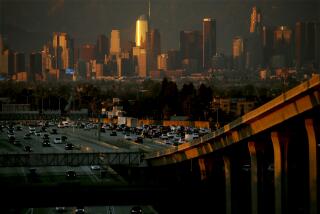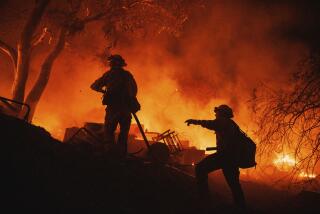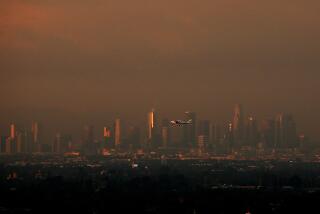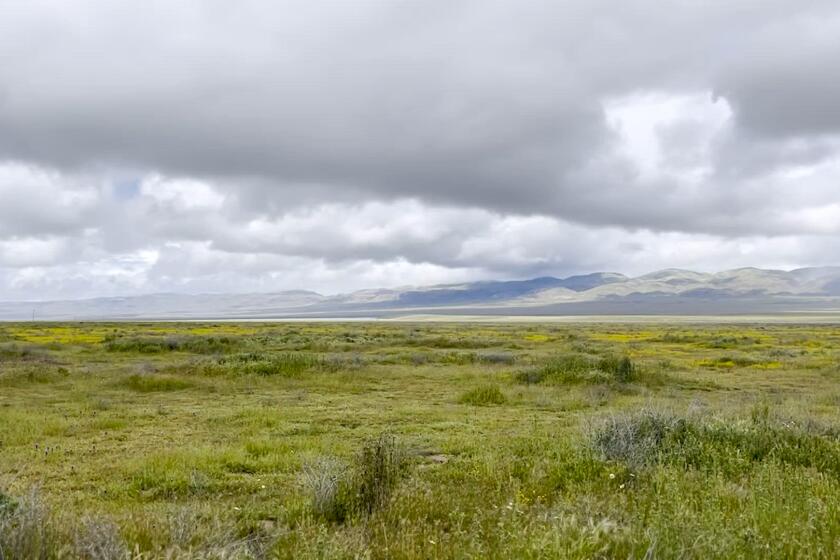Remodeling fireplace habits in Southern California
This wintry week surprised Southern California with shape-shifting clouds hitched to chilly wind, rain in the valleys, snow in the mountains -- just right for a cozy Valentine’s Day spent corralled around the hearth, logs ablaze. Or is it?
These days, environmental concerns and new governmental regulations about wood-burning fireplaces give some people pause. Burn wood logs and you create pollution. Burn natural gas and you consume a nonrenewable resource. Residents are left wondering: What is the future of the fireplace, the figurative heart of the home, the focal point around which we arrange furniture, the sentimental place where we gather families?
New regulations apply to wood-burning fireplaces specifically. In March the South Coast Air Quality Management District passed Rule 445, which regulates permanent indoor and outdoor wood-burning devices, spokesman Sam Atwood said. The rules, some of which went into effect last year, apply to Orange County and large portions of Los Angeles, Riverside and San Bernardino counties. Since October, the estimated 5 million households and 16.5 million people covered by the district can no longer add an open-hearth, wood-burning fireplace to an existing residence or to their yard.
Starting March 9, wood-burning fireplaces no longer will be legal in newly constructed homes covered by the district. Only gas hearths will be allowed.
In November 2011, the AQMD may begin to restrict the burning of wood. Even if an old wood-burning fireplace is legal, using it could be limited, in specific regions, on days when air quality is forecast to be unsafe.
“The ‘no burn day’ requirement is a pretty reasonable lifestyle adjustment for people, considering the beneficial impact on the environment,” Atwood said. “The rule is in line with Denver and cities in the Northwest which have had these kind of restrictions for more than 20 years.”
The reasons are compelling. As more households grow conscious of their carbon footprints, it’s only natural that efforts to recycle waste, save water and minimize household toxins would be complemented by attempts to limit the pollution we release into the air. Burning wood creates tiny particulate matter called PM2.5, which is small enough to “lodge deep in the lungs and cause a variety of respiratory health problems,” according to studies cited by the AQMD.
Still, some question the new rules.
“It’s a foregone conclusion that particulates are mostly placed in the air by other things like wildfires and diesel fuel,” said Dave Laverdiere, owner and president of Boston Brick & Stone in Pasadena. “We’ve done about 50,000 chimney inspections in 17 years, and the vast majority of these fireplaces are either unused or barely used. I don’t think people in L.A. are that interested in fireplaces, except for special occasions.”
For builders such as KB Home, the new rules will have minimal effect. Its houses haven’t included open-hearth wood-burning fireplaces for years, spokesman Craig LeMessurier said.
Los Angeles architect Andy Liu said most Southern Californians see value in a fireplace, wood or gas, even if they use it only once or twice a year.
“People have a passionate attachment to the hearth,” he said. “They want the visual experience of seeing a flame. Even if it is done in a modern way, people still like it and gravitate toward it.”
University of Arizona cultural anthropologist Kathryn Coe went a step further, saying the hearth is much more than the focal point in a living room or a place for guests to congregate outdoors.
“Fire is something ancient and deep within us,” she said, adding that what was once crucial for survival remains an elemental need, even in a modern age.
The most common alternative to the wood fireplace is one fueled by natural gas. Though not a sustainable resource, natural gas burns cleaner than wood, according to the air quality district. Some modern designs use sustainable biofuel.
Existing wood-burning fireplaces can be converted to gas. Another solution is a fireplace insert that burns pellets, said Rob Lewis, Pacific region president of the Hearth, Patio & Barbeque Assn. and owner of Canyon Fireplace in Anaheim.
“Pellets are recycled and green, and offer controlled combustion and low particulate output,” Lewis said.
Fullerton-based landscape architect Alison Terry expects Southern Californians to take the changes in stride.
“There is a growing awareness among clients that green is the way to go,” she said.
Terry expects residents forced to switch from burning wood to gas will understand the need. “It doesn’t crackle or smell the same, but it’s a fire. People will still gather around it.”
More to Read
Sign up for our L.A. Times Plants newsletter
At the start of each month, get a roundup of upcoming plant-related activities and events in Southern California, along with links to tips and articles you may have missed.
You may occasionally receive promotional content from the Los Angeles Times.






